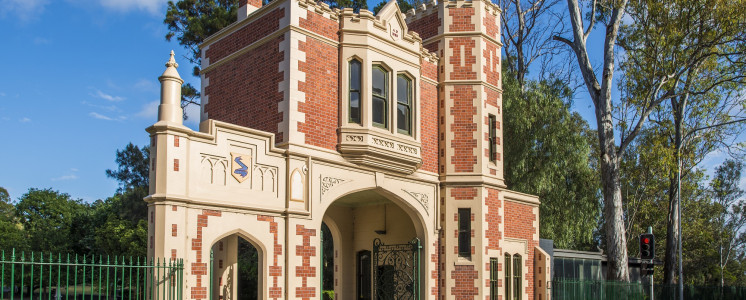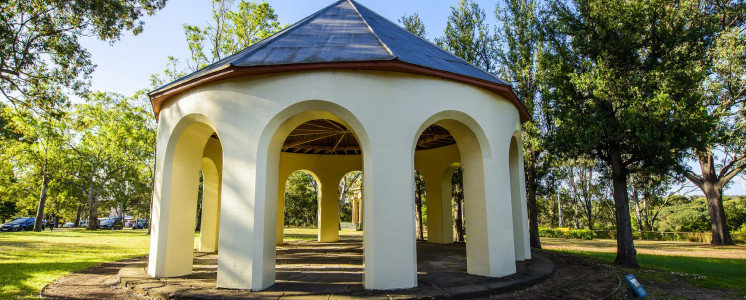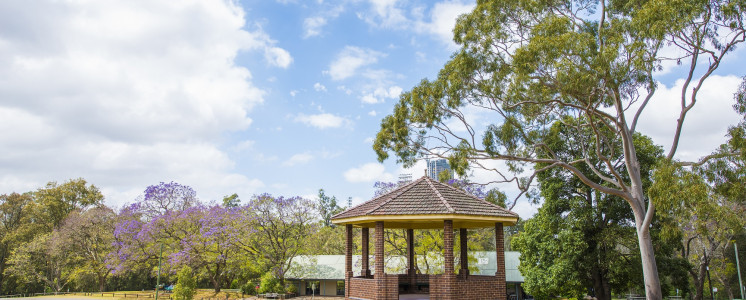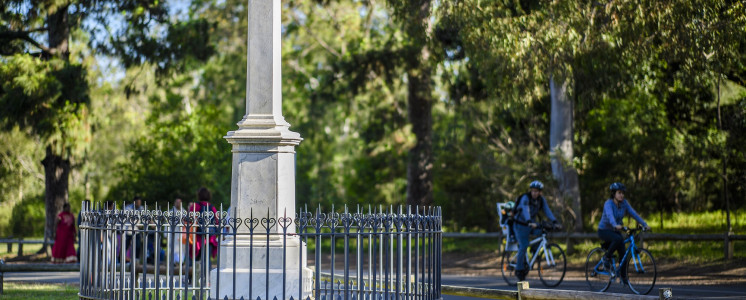Monuments and memorials
Discover Parramatta Park rich history
Parramatta Park is one of Australia’s most significant historical areas. It is home to more than 100 archaeological sites relating to Aboriginal history and is one of the 11 Australian Convict Sites listed on the UNESCO World Heritage Register.
The following monuments and memorials offer a fascinating insight into the past, together with Old Government House, The Dairy Precinct and The Crescent.
Park Gatehouses
There are six gatehouses in Parramatta Park located at the entrances on George Street (the Tudor Gatehouse), Ross Street, Park Road, Macquarie Street, Great Western Highway at Mays Hill and Queens Road.
The Park’s gatehouses date back to the 1870s. They were strategically placed and have different styles, ranging from the grand, Tudor-style George Street Gatehouse and the Gothic-style Macquarie Street Gatehouse to more humble and utilitarian entrances.
The George Street Gatehouse is a key entry point for the Park and an iconic landmark in Parramatta. It was built by the Parramatta Park Trust in 1885, on the site of Governor Macquarie’s small stone lodge. The architect was Scottish-born Gordon McKinnon and it was constructed by local builders Hart and Lavors, with wrought iron gates made by local blacksmith T Forsyth.
The Observatory Transit Stones
Governor Brisbane built an observatory in the Park in 1821, in keeping with the spirit of discovery of the time. The observatory’s transit stones – which originally supported a transit telescope – were used as the meridian mark for explorer Thomas Mitchell’s first trigonometric survey of Australia in 1828.
The observatory building fell into ruin and was demolished in 1848. Only the transit stones were left standing. Instruments from the observatory are now in the collection of the Powerhouse Museum.
The Bath House
The Bath House was completed in 1823 for Governor Brisbane. It has been associated with the two colonial architects, Francis Greenway and Standish Harris.
The Bath House contains archaeological remains related to a pumping system which bought water to the building and heated it as well. In 1886 the Park Trustees converted the Bath House to a pavilion, which survives today.
Boer War Memorial
The Boer War Memorial was erected in 1904 to commemorate the first overseas military engagement in which troops representing Australia, as distinct to Britain, took part.
Significantly, the first of the Australian troops to arrive in Africa in 1899 to take part in the Boer War came from the Lancer Barracks, Parramatta. A total of 100 Lancers from the surrounding districts took part in engagements.
Memorial to William (Billy) E. Hart
William E. Hart was the first Australian to fly a plane and the first qualified pilot in Australia. This memorial commemorates an early, pioneering cross-country flight from Penrith to Parramatta Park on 4 November 1911.
The first such flight in Australia, it saw Hart competing against Wizard Stone of America. Hart won in 23 minutes after Stone lost his way and landed at Lakemba.
Lady FitzRoy Memorial
This memorial was erected to commemorate the place where Lady FitzRoy and the Governor’s Aide, Lieutenant Charles Masters, were killed when their carriage, driven by Governor FitzRoy, overturned and hit a tree in 1847.
The unfortunate event signalled a period of decline for the Domain, as Governor FitzRoy stopped visiting the site where the accident happened, and Government House and the area known as Government Domain fell into disrepair.
See also Rose Hill and Government Farm – significant historical sites within the Park.





